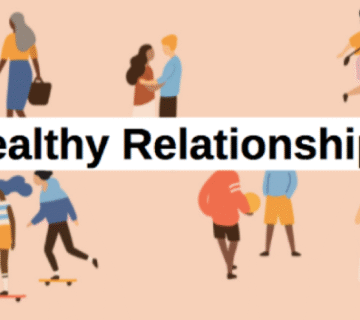Sex in friendship—when friends blur lines between platonic and physical intimacy—has become a central topic in relationship research and popular culture. This nuanced exploration separates myths from realities, offering practical insight, scientific research, and step-by-step guidelines for anyone considering or navigating sex within a friendship. If you’re searching for a unique, indexable, and rankable article that speaks to the realities of modern relationships, this comprehensive guide will deliver.
Keywords naturally included: sex in friendship, friends sex, sexual friendship, sex friendship, intimacy in friendship, friend with sex, sex between friends, best friends have sex, friendship sex, friends with benefits.
Table of Contents
-
Introduction: Why Sex in Friendship Matters More Than Ever
-
What Counts as Sex in Friendship?
-
Why Do Friends Become Sexually Involved?
-
Benefits of Sex in Friendship
-
Risks and Emotional Complications
-
Scientific Research & Philosophical Debate
-
Rules & Best Practices for Navigating Sex in Friendship
-
Gender Differences & Social Context
-
Real Stories and Scenarios
-
Resources: High-Authority Link for Further Help
-
Conclusion
1. Introduction: Why Sex in Friendship Matters More Than Ever
Friendships are evolving. With changing norms around relationships, more people are exploring physical intimacy with friends—sometimes briefly, sometimes as ongoing arrangements. “Sex in friendship” no longer means inevitable disaster; it can, in some cases, strengthen trust, deepen connection, or unveil hidden emotional truths. But it’s also fraught with tension, jealousy, uncertainty, and the real risk of losing a valuable bond. Understanding the balance is essential for making healthy choices.
2. What Counts as Sex in Friendship?
“Sex in friendship” describes a spectrum of arrangements, including:
-
Friends with benefits: Ongoing sexual encounters without official romantic status
-
Best friends experimenting: Exploring intimacy during a friendship “transition”
-
Occasional encounters: One-time or spontaneous sexual interaction between friends
-
Longstanding sexual friendship: Emotional closeness with regular intimacy, potentially over years
What unites these is a solid foundation of trust, a pre-existing platonic connection, and the mutual decision to add sexual activity—not always accompanied by exclusive commitment or romantic aims.
3. Why Do Friends Become Sexually Involved?
Key motivators include:
-
Comfort and safety: Trusting a friend makes vulnerability safer and reduces sexual anxiety.
-
Curiosity and chemistry: Hidden attraction, or a wish to explore new dynamics, often emerges after years of friendship.
-
Convenience: Physical closeness or emotional support can spark sexual interest, especially during periods of transition or loneliness.
-
Shifting social norms: Growing acceptance of nontraditional relationship structures empowers friends to act on physical desires.
-
Desire for openness without romance: Some friends value sexual fulfillment without the complications of dating or formal romance.
4. Benefits of Sex in Friendship
Research notes there are genuine upsides, especially when both people are clear and caring:
| Benefit | How It Helps |
|---|---|
| Emotional safety | Existing trust reduces anxiety and pressure found in dating |
| Honest communication | Friendship supports open talk about needs, boundaries, and desires |
| Increased intimacy | Vulnerability often deepens emotional connection |
| Playful experimentation | Erotic exploration with someone who “gets you” is safer than with strangers |
| Convenience | Easy logistics—no need for awkward dating or small talk |
| Potential social support | Friends can support one another through sexual and emotional ups and downs |
Some participants in studies report increased closeness, more communication, and even stronger friendship after having sex with a friend.

5. Risks and Emotional Complications
Despite the potential benefits, mixing sex and friendship is risky:
-
Blurred boundaries: Difficulty separating friendship from romance can confuse feelings and social roles.
-
One-sided emotion: One friend may fall in love, leading to heartbreak or resentment if feelings aren’t reciprocated.
-
Jealousy and possessiveness: Seeing a sex friend with someone else (or just imagining it) often brings up surprising jealousy.
-
Awkwardness and social fallout: Group dynamics can change, and mutual friends may take sides or gossip.
-
Risk of loss: Some friendships don’t survive the disruption—about a quarter of participants in some studies lose the friendship, even if briefly.
-
Potential for unhealthy secrecy: Hiding sexual friendship from others can increase stress or undermine other relationships.
Most emotional fallout results not from the sex itself, but from mismatched expectations or poor communication.
6. Scientific Research & Philosophical Debate
Numerous studies, as well as recent philosophical analysis, reveal that sex is compatible with friendship in many cases and may actually enhance trust, mutual caring, and sharing. However:
-
Uncertainty arises from the blurred boundaries between friendship and romance, sometimes leading to emotional pain if one person desires more than the other can offer.
-
Sex is an activity usually reserved for select people, making the trust and vulnerability of sharing sex a powerful—but sometimes dangerous—form of mutual self-disclosure.
A recent wave of research shows that friends, especially among young people, increasingly turn to each other for emotional and sexual support—and often do so safely if open communication is present.
7. Rules & Best Practices for Navigating Sex in Friendship
If you’re considering or engaged in sex with a friend, these guidelines increase the chance of a healthy outcome:
-
Have the Conversation Early
-
State intentions, boundaries, and “what happens if feelings change.”
-
-
Use Clear Communication
-
Revisit the conversation after sex—check in on feelings, needs, and wishes.
-
-
Practice Enthusiastic Consent
-
Consent must be mutual and ongoing; either party can change their mind at any time.
-
-
Prioritize Sexual Health
-
Use protection, discuss STI status, and take sexual safety seriously, even when trust is high.
-
-
Define Social Boundaries
-
Agree on what to tell others (if anything) about your new dynamic.
-
-
Stay Flexible
-
Recognize that feelings, circumstances, and desires may change—update ground rules accordingly.
-
-
Make Friendship the Priority
-
If sex causes distress, be ready to step back and preserve the original bond.
-
8. Gender Differences & Social Context
Men and women, research shows, often have different motives, expectations, and experiences in sex within friendship. For instance:
-
Men may be more likely to see sex as separate from emotion or as “a reward” in friendship.
-
Women often emphasize emotional closeness and may have different thresholds for integrating sex into friendship.
-
Adolescents with opposite-sex friends may face unique risks, such as increased substance use or accelerated sexual debut due to peer pressure or assumptions about expectations.
Cultural context, sexual orientation, age, and personality all shape how people approach sex in friendship.
9. Real Stories and Scenarios
-
“We’d been friends for eight years. After both ended relationships, we hooked up—at first, it was liberating. But after a few times, I realized I wanted more, and he didn’t. We had to talk honestly, cry a bit, and step back. Eventually, we rebuilt the friendship.”
-
“Sex with my friend was easy because we already knew each other. We talked openly after every encounter, agreed to see other people, and when he started dating, we faded back to just friends—no drama.”
-
“I’ve been in a friends-with-benefits relationship for two years. We have rules: no sleepovers, no jealousy, weekly check-ins. Honestly, it’s worked—so far. The key is radical honesty and never assuming silence means everything is fine.”
10. Resources: High-Authority Link for Further Help
For a practical, research-backed guide to sex and friendship—including boundary-setting, consent, emotional health, and real-life advice—visit Planned Parenthood’s guide to sex and friendship. This respected resource covers every aspect from communication to sexual safety for all relationship types.
Read More: Sex Friends: Navigating Boundaries, Benefits, and Emotional Realities
11. Conclusion
Sex in friendship is not one-size-fits-all. For some, it’s a source of joy, self-discovery, and even a stronger bond. For others, it’s a shortcut to misunderstanding, heartbreak, or loss. The outcome hinges on open communication, mutual consent, honest self-assessment, and flexibility as feelings change. If you’re considering or already navigating sexual intimacy within friendship, make healthy boundaries, respect, and emotional honesty your north stars.








No comment